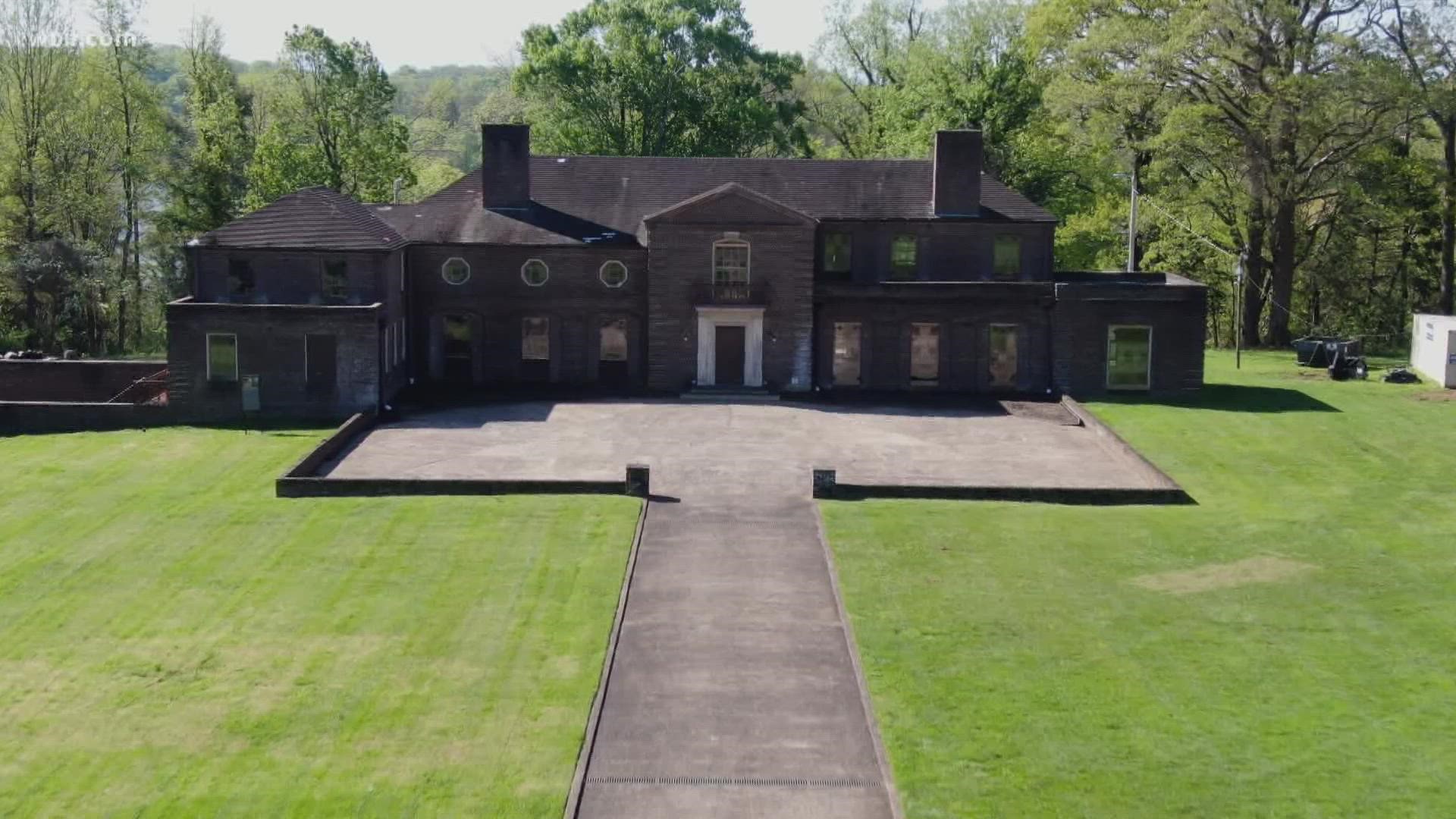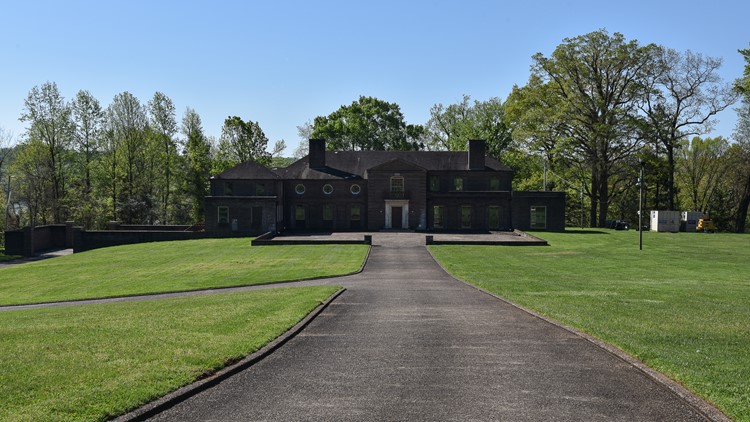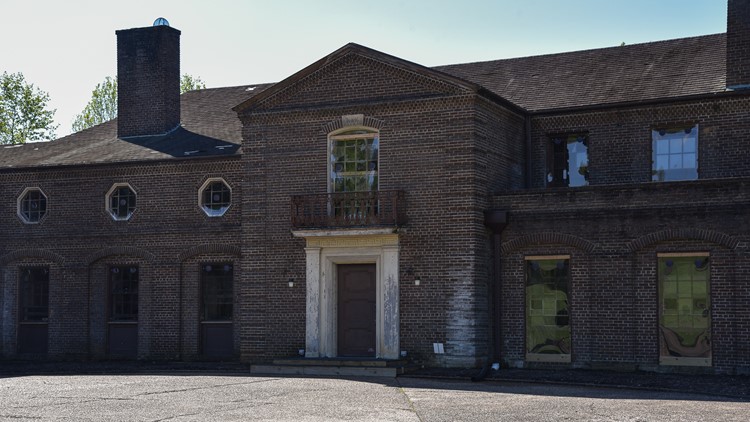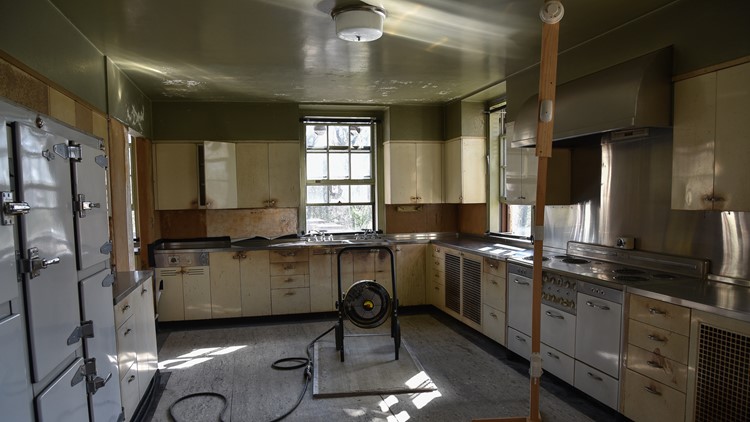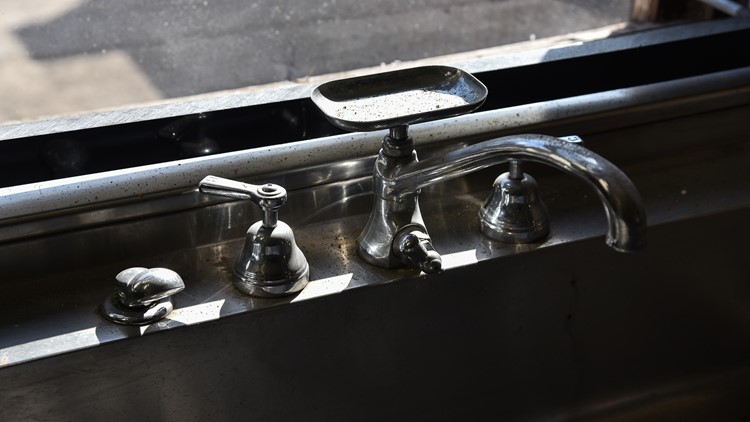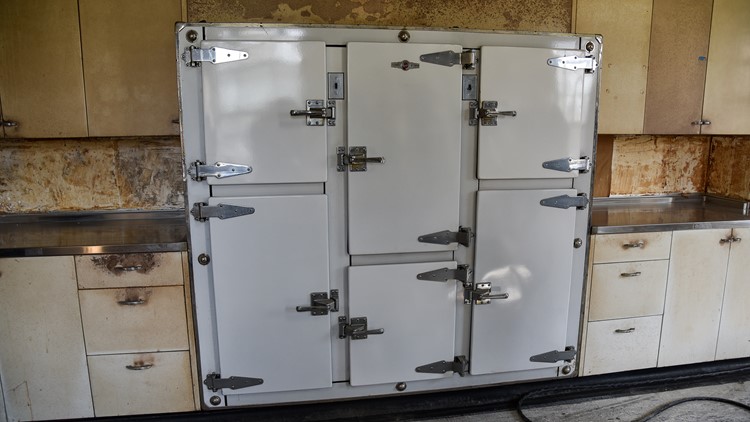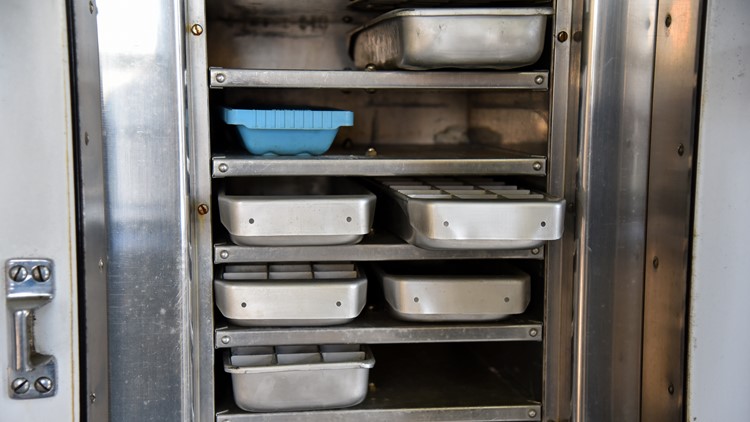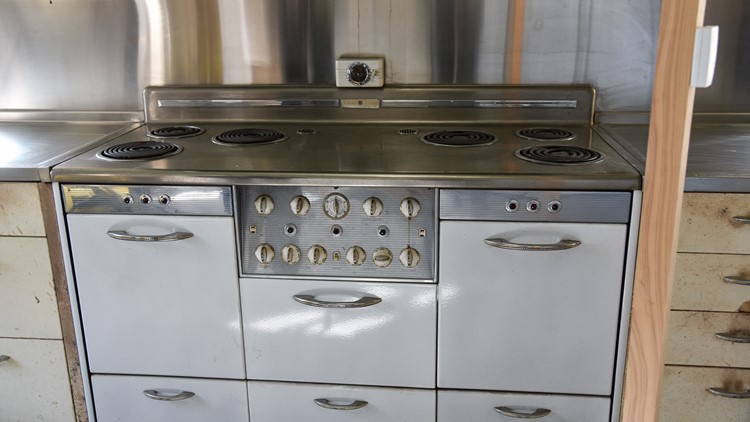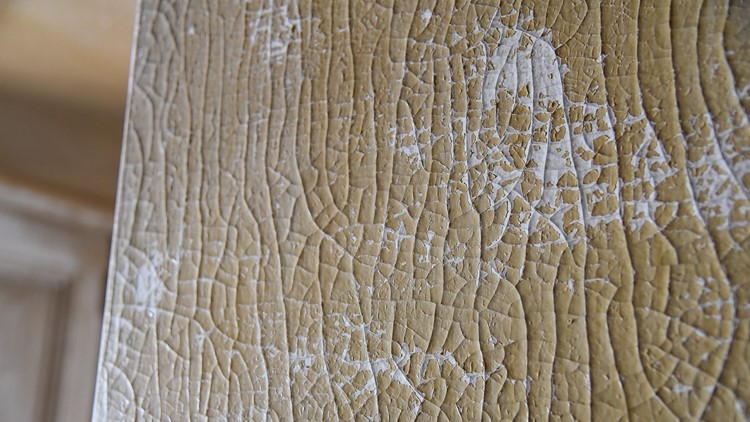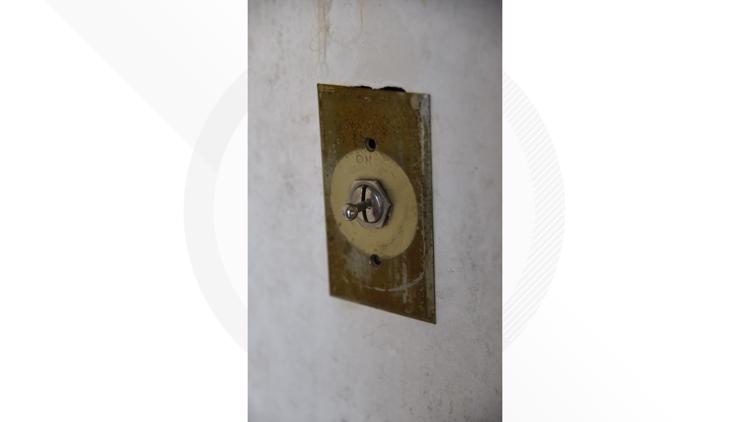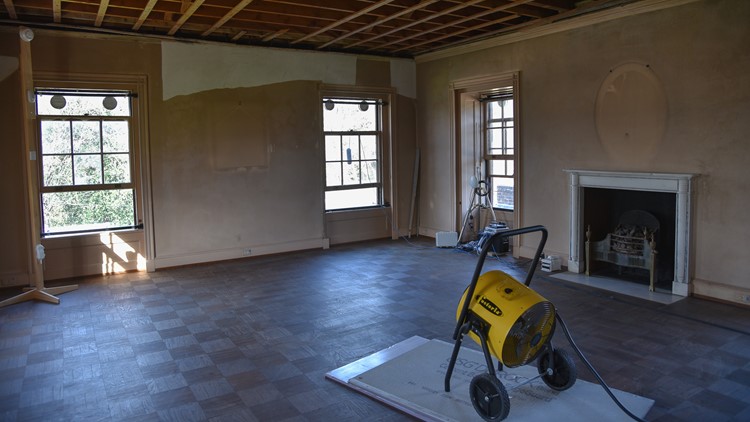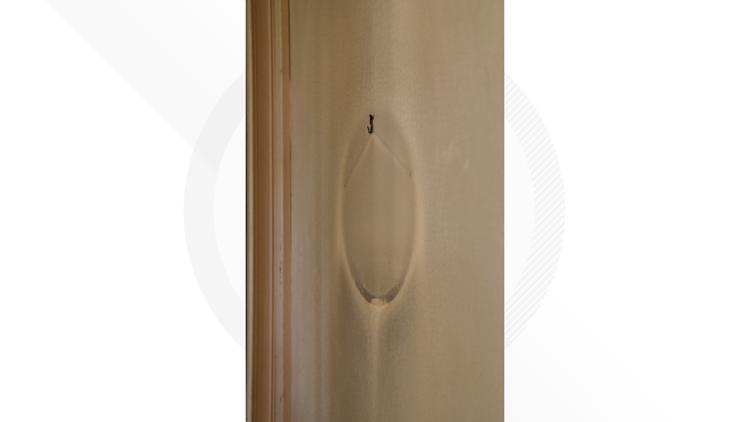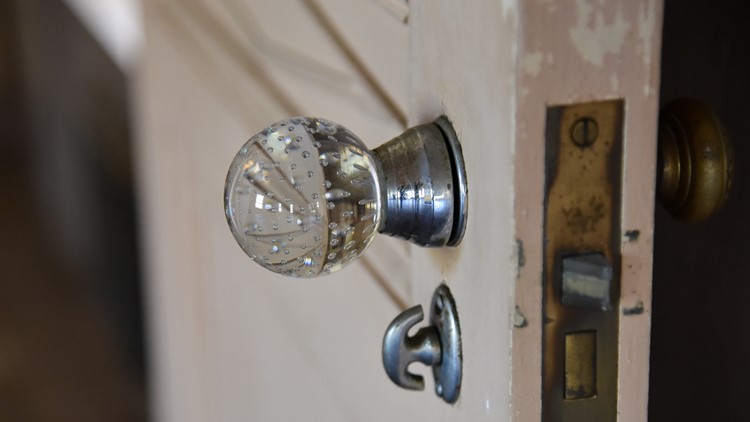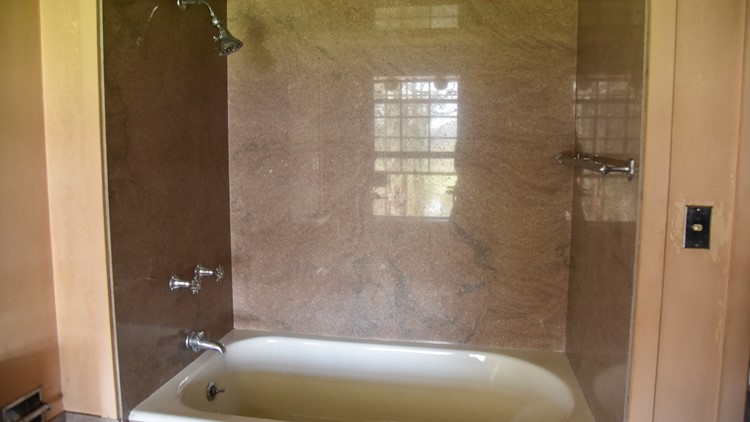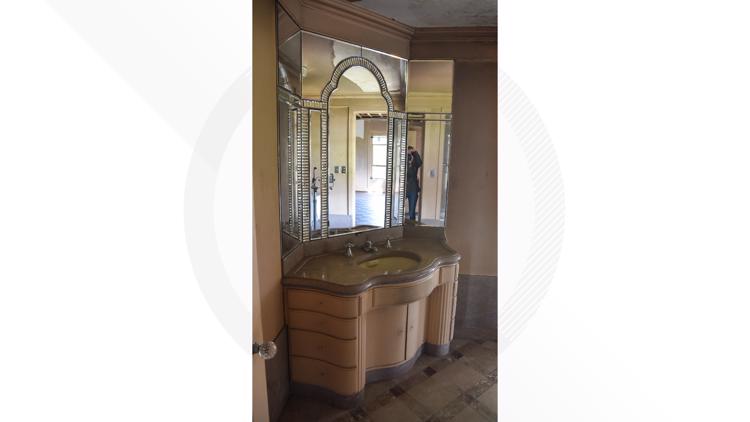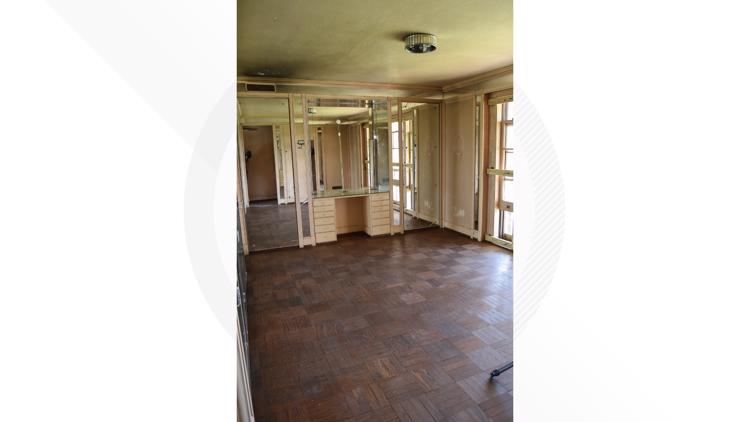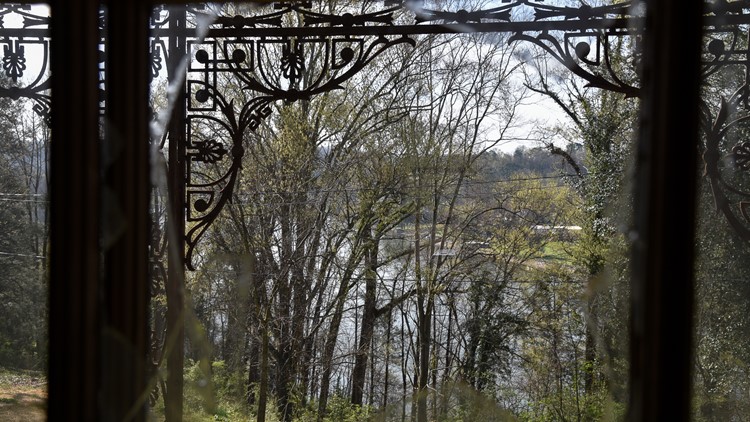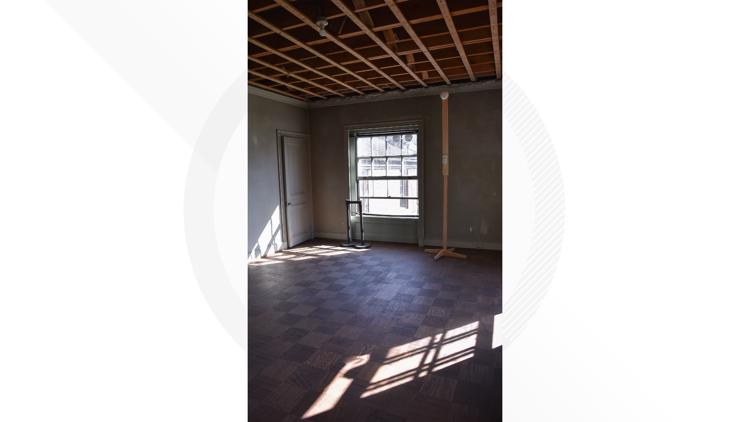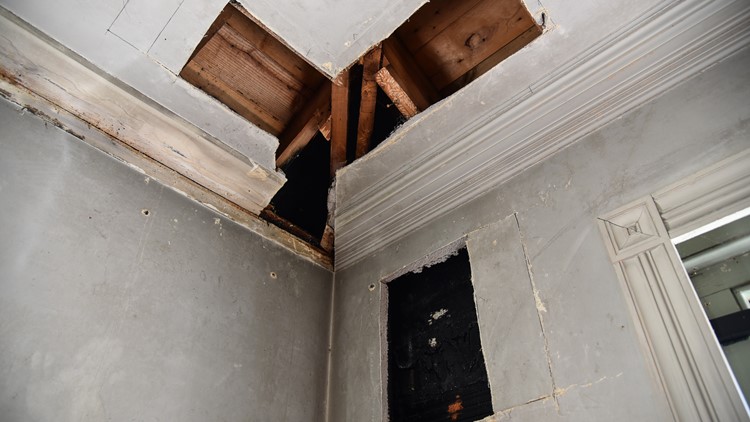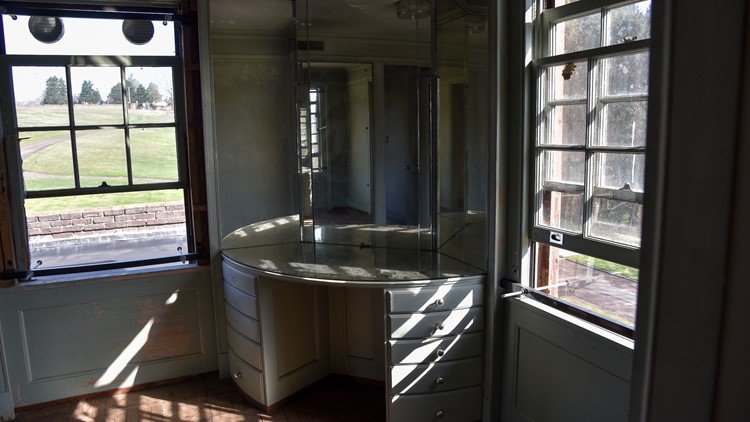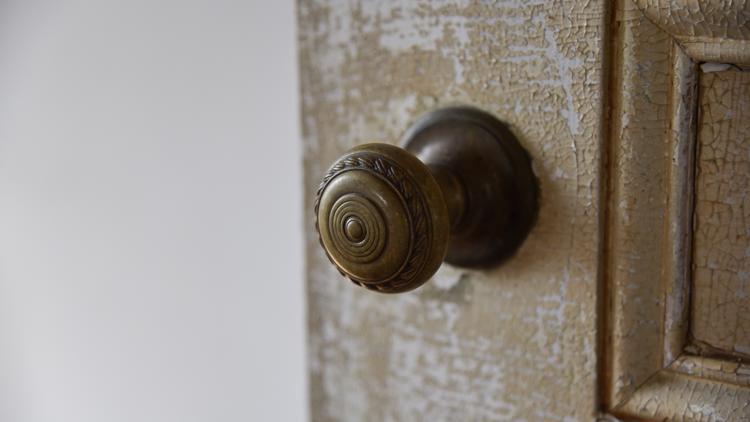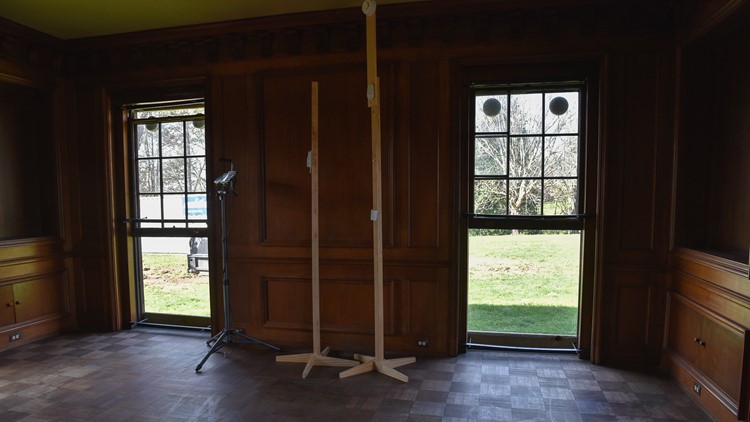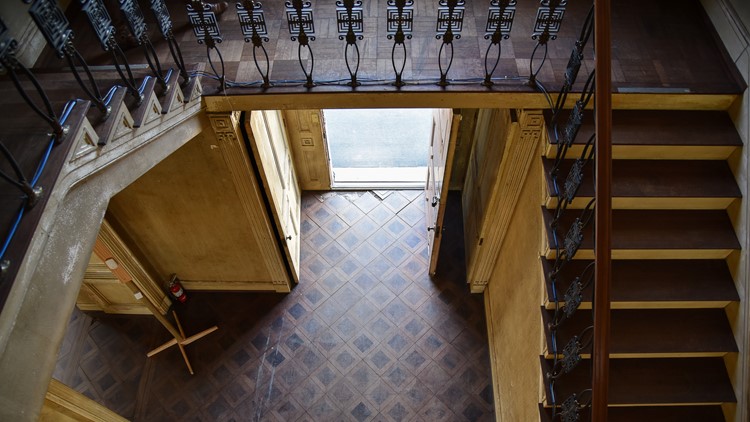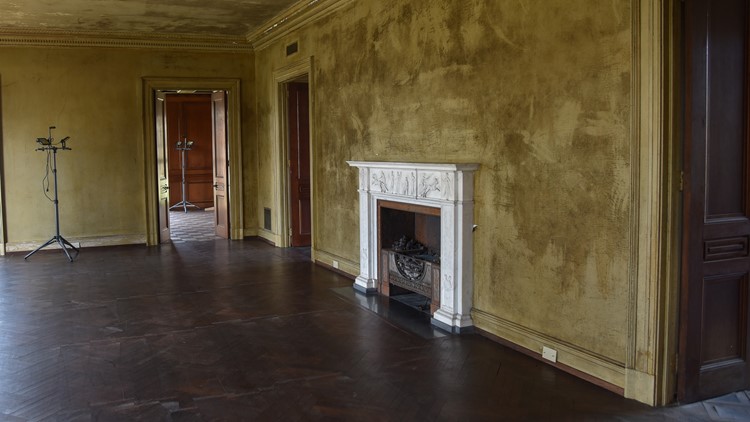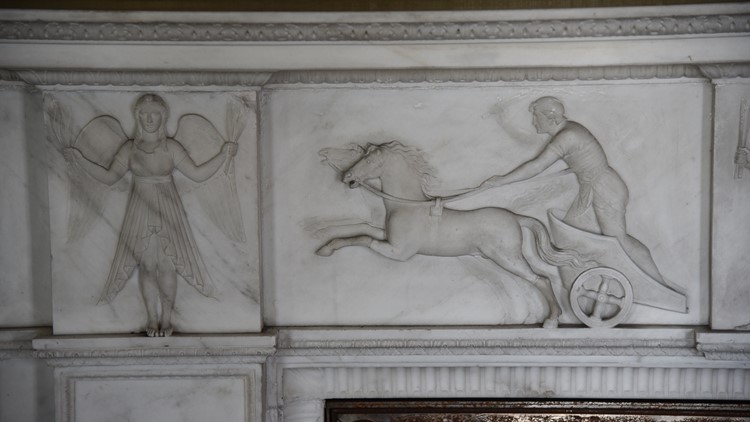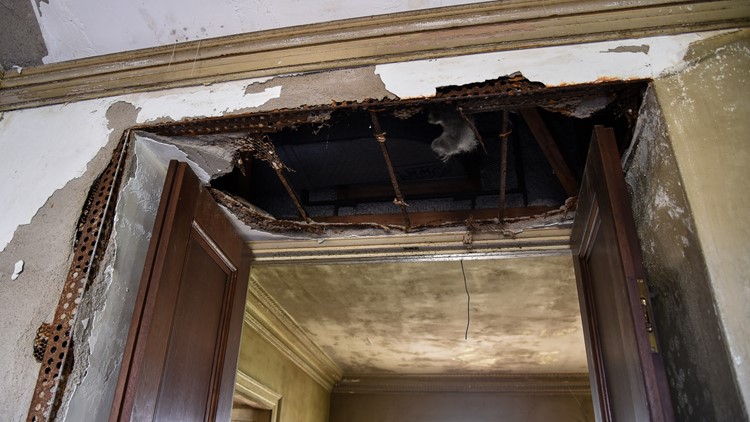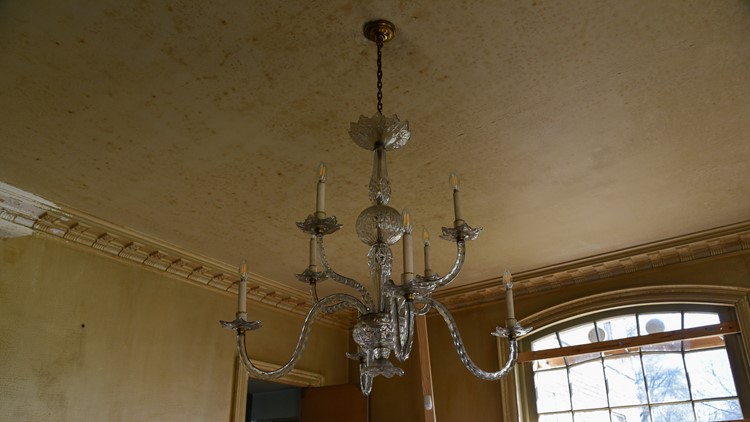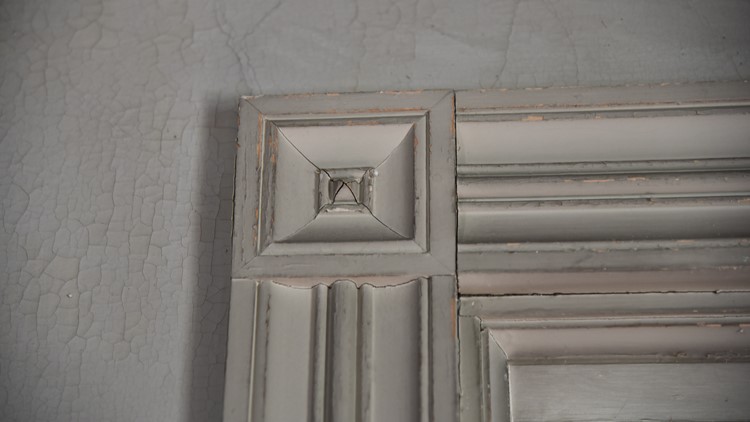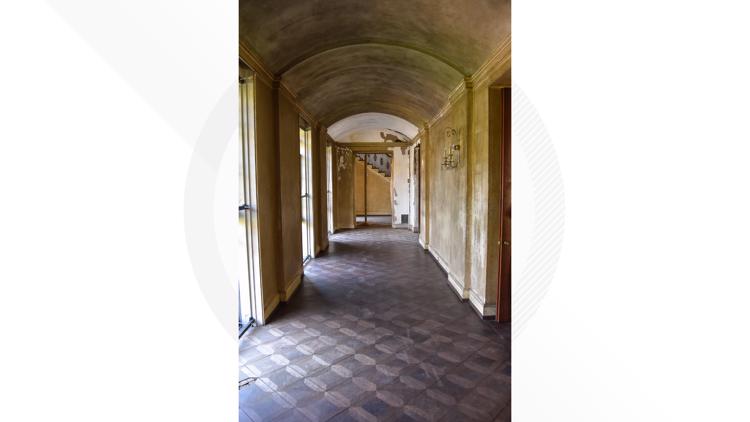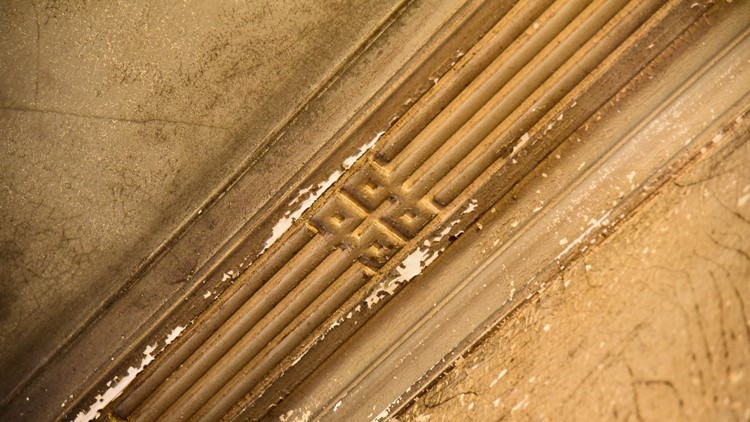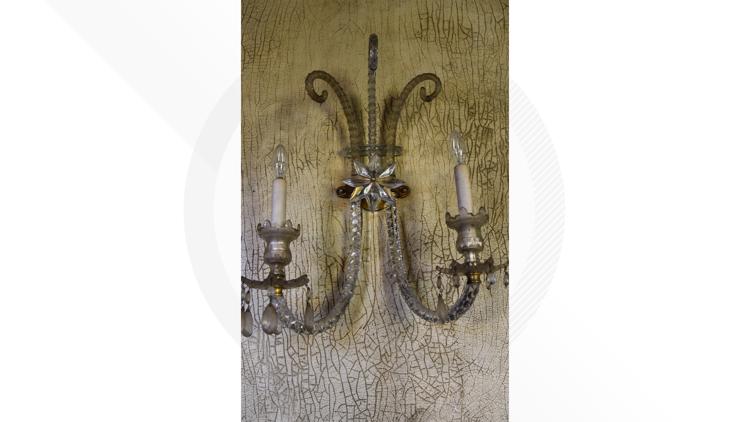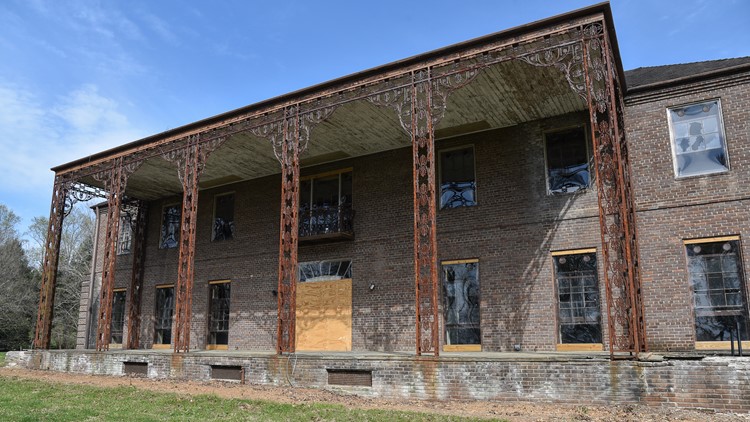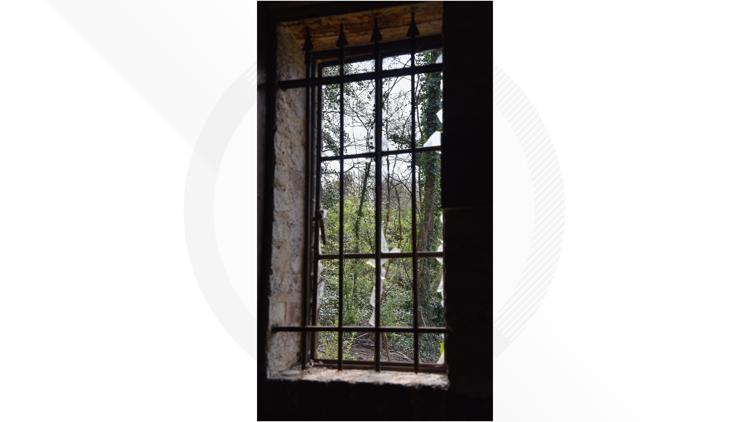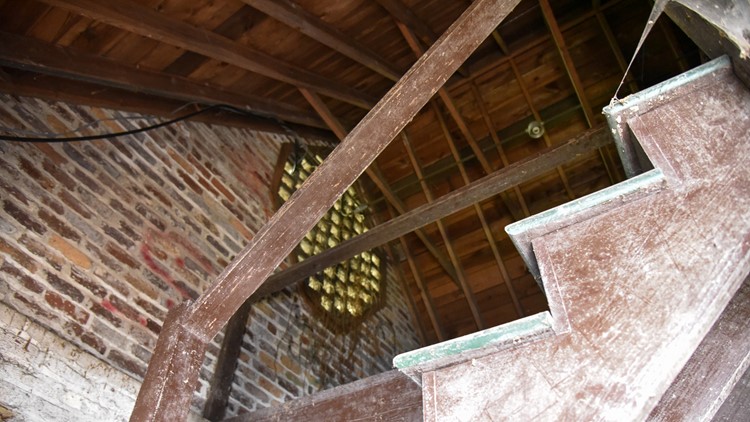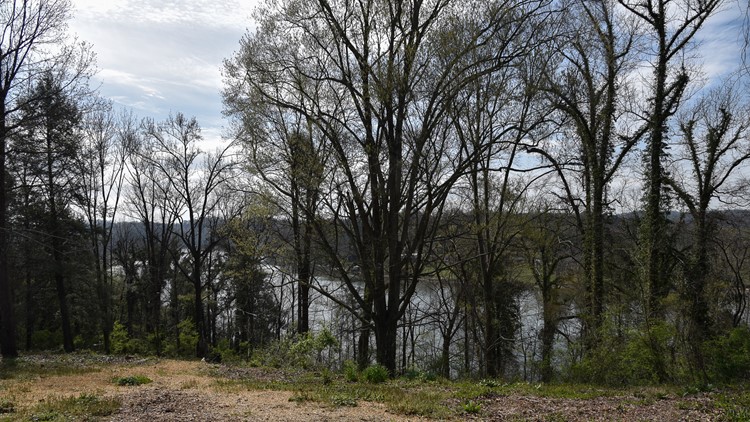KNOXVILLE, Tenn. — The dark brown brick mansion on Lyons View Pike in Knoxville is getting new life after decades of decay.
Dubbed the Eugenia Williams House, the 10,800 square foot English Regency style estate was built in 1941 for the daughter of Dr. David Hitt Williams, an East Tennessee physician who was one of the first investors in what would become the Coca Cola Company in 1902.
Knoxville architect John Franz Staub, who became one of the nation's most famous residential architects, took on the heiress’s project. It was one of the first two houses he ever designed.
FULL SERIES: Explore Tennessee's Abandoned Places
Despite sitting on 24 prime acres along the Tennessee River, Staub’s design catered to Eugenia’s desire for a reclusive life. They planted tall trees between the house and the water to protect her privacy, and a tall brown brick wall shielded the property from the road.
Eugenia lived in the house until 1983 when her health took a turn and she went to the old St. Mary’s Hospital in North Knoxville. She died in February 1998 and was buried in Old Gray Cemetery.
In her will from 1981, she donated the property to the University of Tennessee in honor of her father. It wasn't supposed to be sold or subdivided, and she wanted the house to be used in a way that benefitted UT. If the university couldn't find a use for the house, she said it would be OK to tear it down.
“Really the only condition in the will is that the property would be used for the benefit of the University of Tennessee and whatever we do with it would recognize Ms. Eugenia’s father,” UT System President Emeritus Dr. Joe Johnson said in 2018.
Initially, it was thought the Eugenia Williams House could be a residence for the UT president, but the Board of Trustees decided to stop the practice in the 2000s. After that, disputes over how the property should be used according to her will and a quick succession of UT presidents left the house sitting abandoned for years.
On Nov. 5, 2018, Johnson, who headed the committee overseeing the house, announced a plan to transform the property into a retreat center and community showpiece for student leadership development.
“We all feel that what we’ve proposed would fit in the conditions of her will,” Johnson said at the time. “We think Ms. Eugenia would be happy with us.”
Abandoned Places: Restoring the Eugenia Williams House
Several months later, on April 30, 2019, UT ultimately decided to seek approval to sell the Eugenia Williams House and use the money from the sale to fund scholarships for lower-income students.
On June 25, 2019, the Board of Trustees approved the sale of the house and went on to file in the Knox County Chancery Court. By July 24, a Knox County chancellor cleared the way for the sale, subdivision and possible demolition of the mansion.
The proceeds from the sale would go into the UT Promise scholarship in 2020, formally known as the UT Promise Dr. David Hitt Williams Endowment in honor of Eugenia’s father.
Through August and September 2019, UT started accepting bids and hosting open house tours for people hoping to one day own the historic home. It was one of the first times in many years that people were able to legally look around the mansion. Its years of deteriorating on Lyons View Pike had long drawn the attention of West Knoxville curiosity-seekers.
Wooden boards covered long broken windows and darkened the water-damaged halls, but little details on fireplaces, crystalline light fixtures and ghostly outlines from art that used to hang on the walls hinted at the house’s old opulence.
In October 2019, final bids on the historic house came back undervalued as the state weighed the options. The highest bid came from the Aslan Foundation, a Knoxville-based organization created by the late lawyer and philanthropist Lindsay Young.
On Nov. 1, the Tennessee State Building Commission accepted the foundation’s $4.025 million bid, and the sale officially went through in 2020.
“The Aslan Foundation really values historic resources throughout the Knoxville area, and one of the things that we like to do is step in when we think there's a project that maybe no one else will take on,” Executive Director Andrea Bailey said.
Bailey admitted she was one of many to slip under the gate for a glance at the grand estate over the years, but her first time inside stands out the most.
“I think my biggest reaction was that this really is a time capsule. I've worked on a lot of historic sites and usually, you have to undo a lot of history when you come in, but everything that was here in 1941 is still here, which is pretty incredible,” she said.
Intricately carved marble fireplaces are still secured to the walls. The decorative doorknobs are still functional for the most part. Even the original pulls for long-gone drapes still swing in the windows.
Roughly a year and a half into the project, the foundation has focused on historic research, creating structure reports and getting the property ready for restoration.
“We were fortunate to have the original drawings that were produced by John Staub so we understood the care level of attention to detail that went into some of the spaces and some of the specific details,” said Brandon Pace, a principal of Sanders Pace Architecture working on the Eugenia Williams House.
Pace said following the designs of a famous architect was intimidating but an exciting opportunity, especially since the house was still largely intact.
Teams stabilized the foundation, removed the tangle of vines ensnaring the tall trees planted decades ago and uncovered a small stable built at the back of the property. They encountered critters and a large nest of bees in an upstairs bedroom, which were safely relocated.
“There were animals, but maybe the worst damage was done by humans,” Pace said. “People would break into the property over time. It was vacant for so many years that I've talked to a lot of people, who will remain nameless, who have spent time inside the building through the years.”
The process revealed details of Eugenia’s solitary yet stylish life. Massive top-of-the-line appliances for entertaining still sit in the kitchen complete with original ice trays in the freezer. Luxurious vanities with discreet slides that once turned on lights for makeup mirrors adorn the bathrooms.
Bailey’s favorite is Eugenia’s personal dressing room with the house’s best view of the river where the heiress used to keep her extensive fashion collection behind floor-to-ceiling mirrors.
“Eugenia Williams was very into fashion,” she said. “It's, to me, really wonderful to think of her in there and looking through all her finds from Paris and New York and getting dressed for the day.”
Pace said his favorite room is the downstairs library with large wooden shelves along the walls broken up by tall windows overlooking the grounds.
“I think sitting in that library space, you really get a sense of the kind of commanding presence that the house has on the bend of the Tennessee River,” he said.
Exterior restoration will come next to fix the broken windows and repair the original 1940s-era roof that has been prone to leaks. The team will move inside the house once the historic structure report is finalized and true to John Staub’s original design.
“It's not going to be treated as a museum to John Staub the architect. This will be something that we hope will have a public use over time,” Pace said.
The foundation is still deciding how it will use the Eugenia Williams House once the project is done in 2025, but Bailey said it will be available to the public with trails around the property’s 24 acres to enjoy the riverfront views.
“We are incredibly excited to have this opportunity to restore something that so much of the Knoxville community both loves and also wonders about and to be able to open it to the public,” she said.
The Aslan Foundation is offering monthly tours of the property as work continues, and anyone can secure a spot online. It also has a blog documenting the restoration.
While it’s still a few years away, the Eugenia Williams House’s future seems to be set on rejoining the West Knoxville community.
Reporter’s note: Though many of these buildings are unused and empty, they sit on private property that is still actively used in some cases. Do NOT attempt to unlawfully enter any of these places without permission. Many of them are structurally unsound and pose potential health hazards, like asbestos and lead paint. 10News contacted all owners and obtained permission prior to visiting.
For more stories from East Tennessee's Abandoned Places, check out our YouTube playlist:

